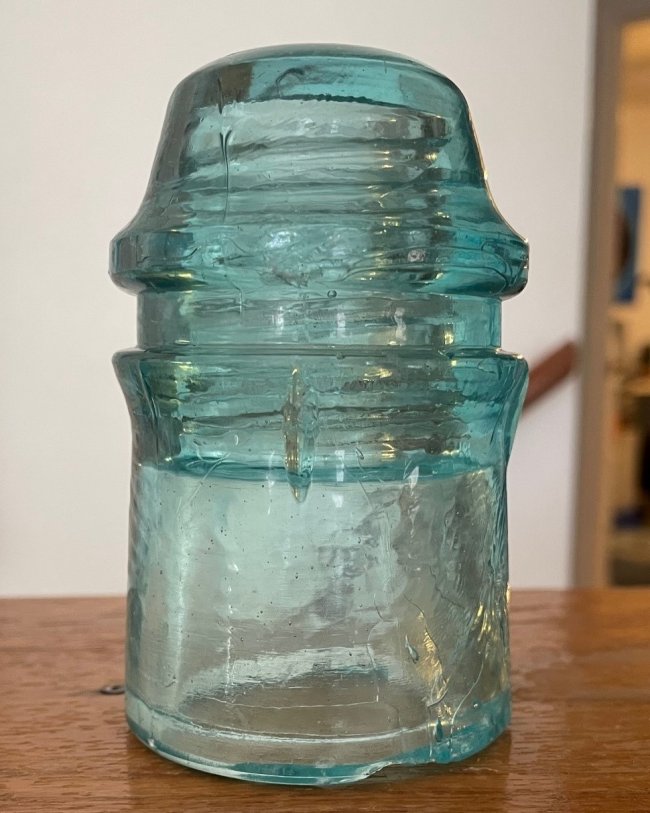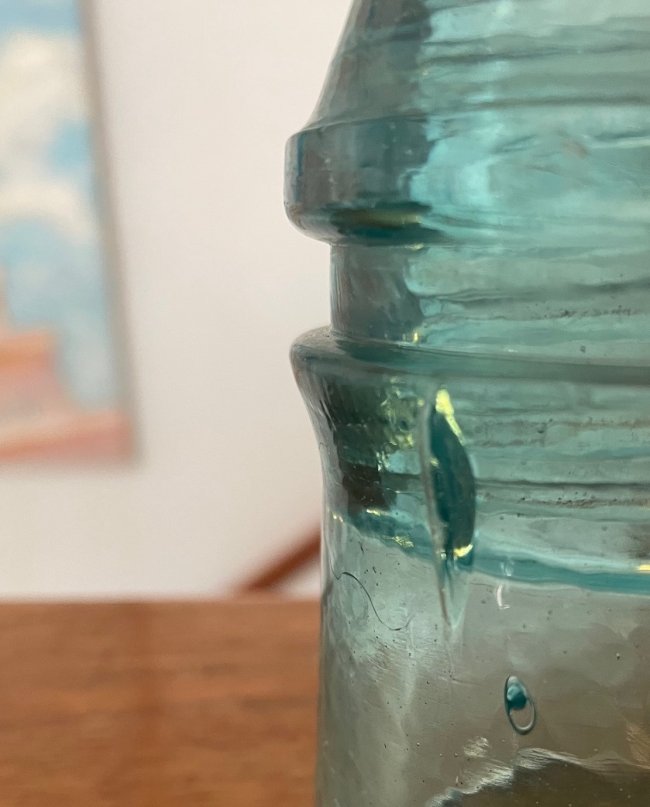Hello:
I picked this up at an antique store in California. It looks like a normal insulator, but it has four small "fins" below the lower lip. There are four 90 degrees apart.
It has no markings on it.
My questions are:
1. What are the "fins" for?
2. Is this a rare insulator?
3. How old is it?
Much Thanks,
Greg Stanley - California
 USA
USA
I picked this up at an antique store in California. It looks like a normal insulator, but it has four small "fins" below the lower lip. There are four 90 degrees apart.
It has no markings on it.
My questions are:
1. What are the "fins" for?
2. Is this a rare insulator?
3. How old is it?
Much Thanks,
Greg Stanley - California


